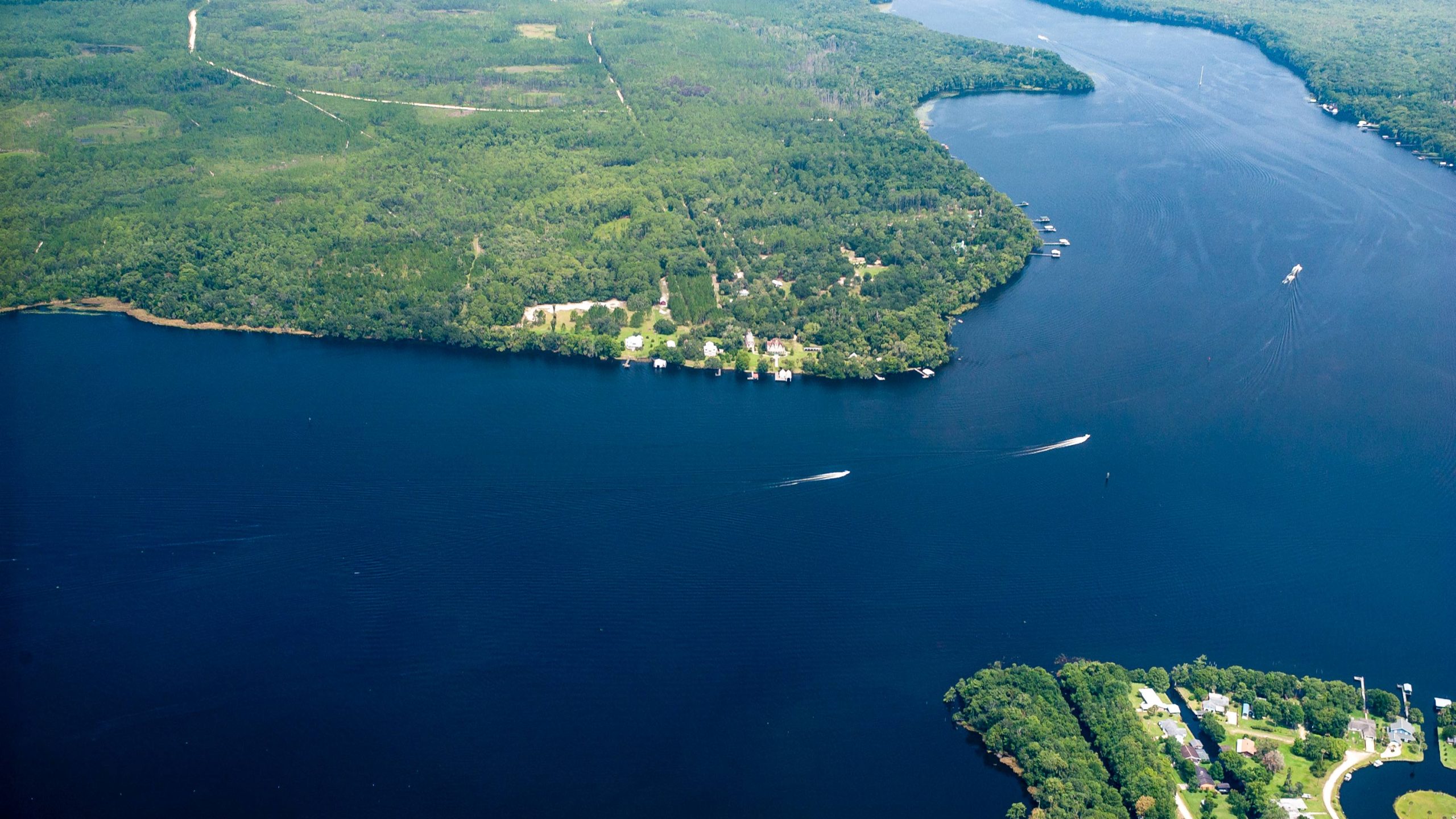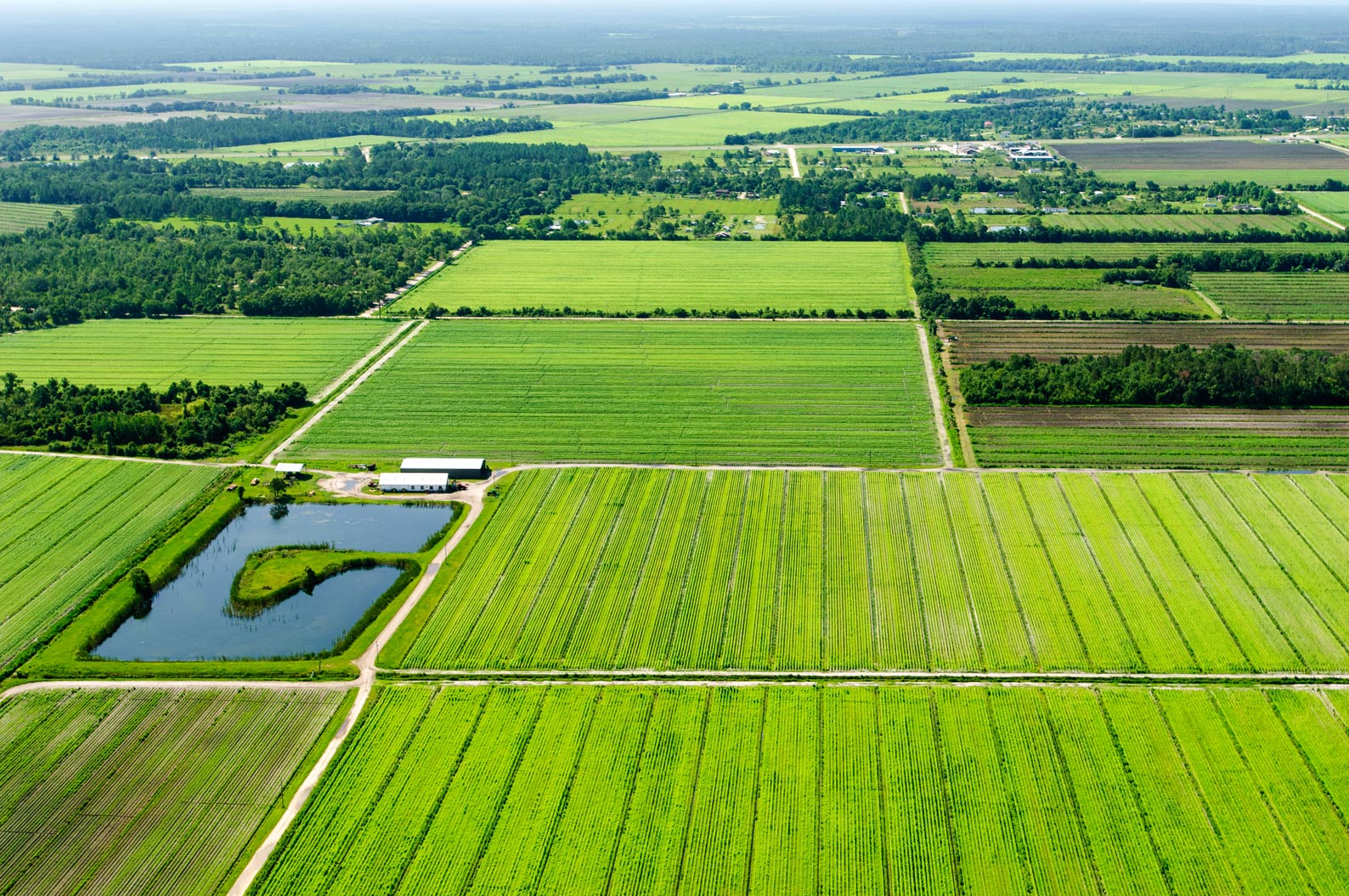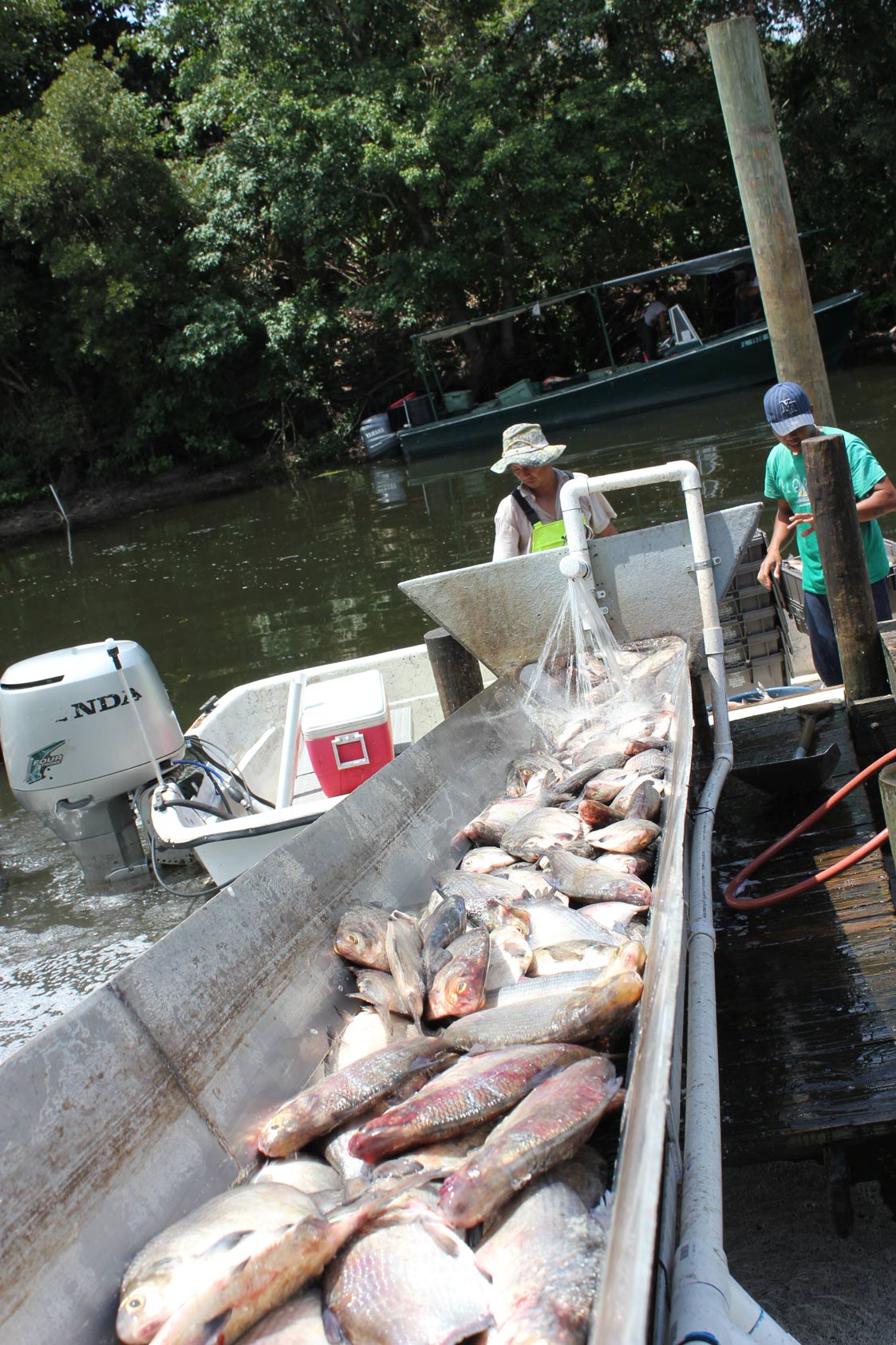A Journey on the St. Johns River: The lower basin
This is the fifth part of a series about the St. Johns River. Each installment explores one of the river’s three distinct basins. During this leg of the journey, we visit an area where springs, tributaries and farming have shaped the river.
The St. Johns River widens to form Lake George in a region where springs and tributaries contribute to the river’s flow.
Just downstream from Lake Monroe, the Wekiva River joins the St. Johns River. As each stream and tributary drains, the St. Johns grows increasingly wider. Two hundred miles into its journey, the St. Johns is the accumulated drainage of surface water across 3,200 square miles of wetlands, farmland, forests, and urban and suburban neighborhoods.
The St. Johns River is no longer a river you can wade across and the convergence of the Wekiva River marks the beginning of the lower basin, the third and final basin.
“Most of the springs that influence the St. Johns are in the middle stretch of the river between lakes Monroe and George,” says Senior Environmental Scientist Rob Mattson of the St. Johns River Water Management District. “That’s where the Floridan aquifer is closest to the land’s surface. The water is under pressure and can pop out in these springs.”
“Springs contribute to the water quality of the St. Johns River,” says Mattson. “They provide a fair amount of flow in the river and are important hydrologically.” During dry months of the year — generally February to April — springs help maintain the base flow for the St. Johns, improving water clarity in the process.
Continuing downstream, it’s hard to tell where the forest ends and the river begins: water gradually fades into cypress swamps that finally become upland forests. Bordered by large areas of conservation land (including the Lower Wekiva River Preserve State Park, Blue Spring State Park, Hontoon Island Recreation Area, Lake Woodruff National Wildlife Refuge and the Ocala National Forest), this is a wild section of river. Black bears live here, as well as white-tailed deer and otters. The river winds through the Ocala National Forest, important habitat for the Florida scrub jay, Florida’s only endemic bird. This section offers a chance to see old Florida, a section of the river virtually unchanged for hundreds of years.
The only signs of humans are the occasional boater. The main channel periodically splits, looping like a freeway interchange. Lake Woodruff and Lake Dexter flow into the main channel before the St. Johns becomes a lake again and widens into Lake George.
Lake George is the final and largest lake along the St. Johns, and the second largest lake in Florida. In 1765, the naturalist John Bartram traveled with his son, William, up the St. Johns. They spent several nights exploring the lake, naming it after King George. Britain had just traded Havana to Spain in exchange for the territory of Florida. The elder Bartram had been commissioned to explore the newly acquired land.
The younger Bartram returned to Florida in 1774, revisiting the lower St. Johns upriver, traveling as far as Blue Springs. He spent several nights on Lake George and wrote about his journey in his book, “Travels,” published in 1790, drawing attention to the new territory — now owned by a young United States. He described the clear water at Lake George where trout (Largemouth bass) and bream swam alongside alligators as they do today.
Lake George is 11 miles long and about 4.5 miles wide, but only 7–8 feet deep. Saltwater springs feed into the lake, a remnant from recent geologic history (2 million to 10,000 years ago), when sea level was somewhere around 100 feet higher, and the St. Johns River was a coastal lagoon.
Ocean-dwellers take advantage of the unique inland saltwater habitat of Lake George. Species of mullet, striped bass, and blue crabs live here. The Atlantic stingray — a species that can live in variable salinity — search the lake bottom for food. But the lake is not exclusively salty as evidenced by the freshwater submerged grass beds that thrive in this stretch of the river. These grass beds support a fishery bringing recreation and tourism. Fishermen know Lake George as a trophy lake; a place to catch six-to-nine-pound bass. Fishing boats routinely dot the broad horizon.
From 2013–2017, some of the boats were commercial fishermen contracted by the District. They filled their nets with gizzard shad, which are native, but their population is out of balance due to nutrient pollution. Normally, shad are 5–20 percent of the total fishery. Pollution levels trigger population explosions and shad can make up 90 percent of the population.
Gizzard shad live at the bottom of the lake and dine on algae, keeping it in check. But when pollution — specifically nitrogen and phosphorus — enters the lake from stormwater runoff, the nutrients trigger excessive algal growth. Shad, now offered up an all-you-can eat algae buffet, increase in number exponentially, starting a feedback loop.
Shad normally stir up muck from the river bottom as they feed, but, thanks to the accumulated algae, the sediment and muck contain high levels of phosphorus. More shad equals more stirred up sediment that releases more phosphorus into the water. This triggers more algae that feeds more shad, and the cycle continues. Water quality and clarity decline, and with it the grass beds and ultimately fisheries.
Shad excrete some of the phosphorus back into the lake and bank the rest in their bodies until they die. Harvesting shad from the lake is one way to remove phosphorus. Additionally, without shad stirring up muck, water clarity improves. Shad harvests interrupt the cycle of phosphorus — algae, shad, phosphorus.
The fishermen contracted by the District have harvested 7.3 million pounds of gizzard shad and with it, an estimated 60,000 lbs. of phosphorus from 2013 to 2017. Removing nutrient pollution from within the St. Johns is part of improving water quality. Addressing sources of pollution coming from outside is critical to protecting water quality. With millions of people living within the watershed of the St. Johns, there are many different sources of pollution that make their way to the river. There is a limit on what the river can handle before the water quality declines. To that end, District scientists worked with the Florida Department of Environmental Protection (DEP) to set limits for pollution: the Total Minimum Daily Load or TMDL. This puts a quantifiable measurable number on the amount of a pollutant — nitrogen, phosphorus, bacteria, etc. — a water body can absorb before water quality declines. TMDLs set a target that is then used in the Basin Management Action Plan (BMAP), a DEP restoration plan for water quality.
Specific to a particular water body and its basin, DEP works with regional stakeholders — cities, counties, utilities, landowners and industry – to gather input and gain consensus on the BMAP. The BMAP outlines pollution reduction milestones. The end goal is to meet the TMDL levels and restore water quality.
“The BMAPs have been a great asset in protecting and improving surface water quality throughout the District and the state,” says Derek Busby, a Cost-Share Project Manager at the District. Busby has worked in the Lower St. Johns River Basin for most of his career at the District. He helps design and implement water treatment projects with public and private stakeholders under the Lower St. Johns BMAP, leveraging District funding in cost-share agreements to implement the projects. “The BMAP sets the targets and stakeholders figure out how they are going to reach those targets,” he explains.
“Local efforts and projects are one of the most important ways to reduce pollution in the lower basin,” explains Busby.
Some cost-share projects incorporate individual farmers and growers in upgrading farm equipment and practices to those that use water and fertilizer more efficiently. Other projects solve far-reaching issues.
Collectively, the agricultural lands of Putnam, St. Johns and Flagler counties are known as the Tri-County Agricultural Area (TCAA). Farmers here grow cabbage, blueberries, potatoes, corn, beans, even sod. In Putnam County alone, agriculture made up 37.7 percent of the Gross Regional Product in 2019. Supporting farmers and ranchers in saving water and reducing waste helps retain farming.
The District partnered with Putnam and St. Johns counties to build two unique water treatment systems in the TCAA. At Deep Creek West (a.k.a. Yarborough tract) and Dog Branch (a.k.a. Edgefield tract) water treatment systems mimic natural wetlands in filtering and removing nutrients. Water winds through a series of retention ponds where solids settle out, then filters through artificial wetlands where plants absorb dissolved nutrients before water reaches the St. Johns. Completed in 2006 and 2007, these treatment systems reduce the amount of nitrogen reaching the river by 50 percent and reduce phosphorus by 60 percent. It all adds up.
“It’s working. Water quality is improving,” Busby says. “We’re meeting the limits for nitrogen in this portion of the river.”
Leaving Palatka and heading north and downstream, the river reaches the increasingly urban areas of its journey and the BMAP continues to guide efforts to restore and protect the water quality of the St. Johns.
We’re entering a transition zone – where rural land use switches to urban Orange Park and Jacksonville — and where the character of the river changes as well, meeting the ocean as the St. Johns becomes an estuary then enters the ocean.




